| |
|
.

NOW-SUNDAY, SEPTEMBER 7
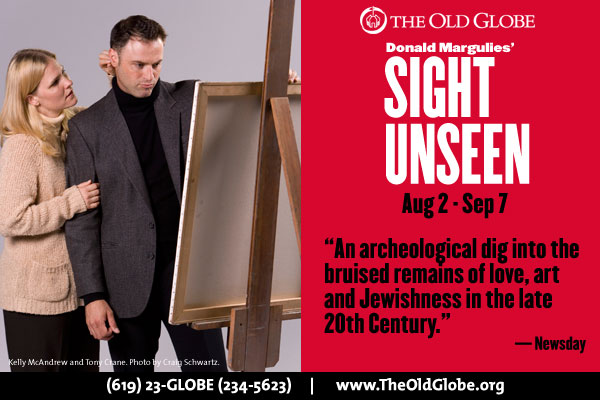
SUNDAY, AUGUST 24
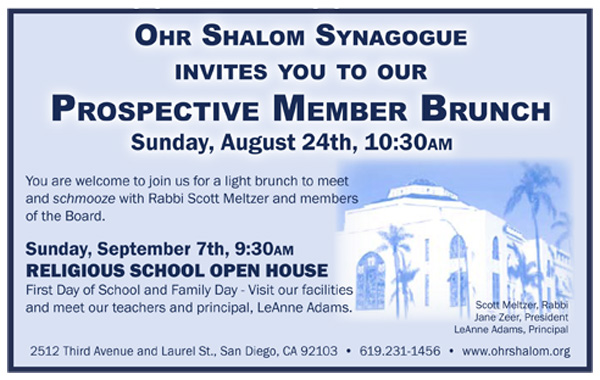
MONDAY, SEPTEMBER 1
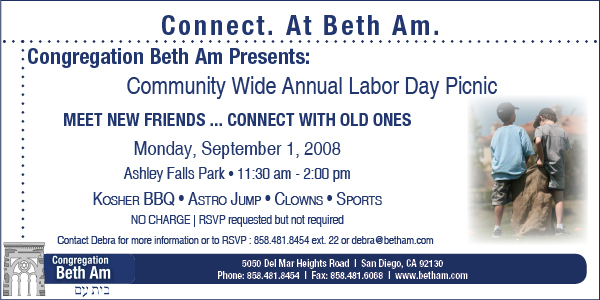
.
FRIDAY, SEPTEMBER 12, 2008 Temple Solel S'more Shabbat
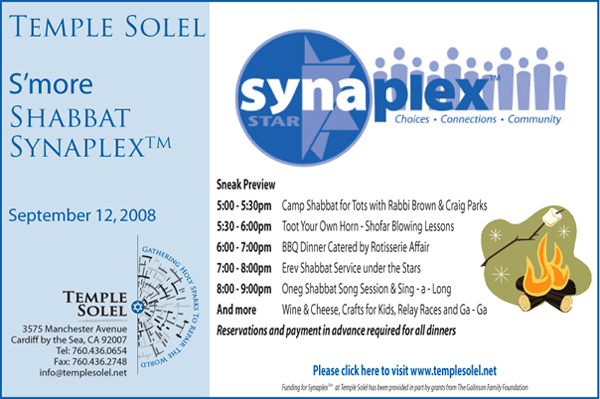
________________________________________________________
MON., SEPT. 29-THURS., OCT. 9
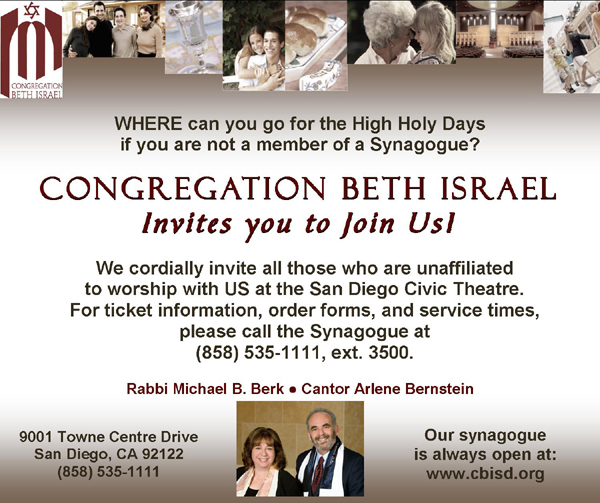

THE PEOPLE OF THE BOOKS
SDSU professors probe common origins, traditions of Christianity and Judaism
A Portable God: The Origin of Judaism and Christianity by Risa Levitt Kohn and Rebecca Moore, Rowman & Littlefield Publishers, Inc., Lanham; ISBN 978-0-7425-4465-9, 2007, $22.95, p. 202.
By Fred Reiss, Ed.D.
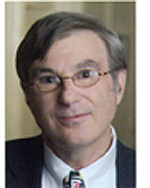 WINCHESTER, California—History shows that Christianity and Judaism have generally been antagonistic towards each other. Christians viewed Israelites as a faithless people who contend with God and are consequently punished. They say that God promised a messiah to usher in a time of love; and that that messiah is Jesus Christ. Jews declare that God made an irrevocable covenant; granting them the land of Israel and His benevolence. They also assert that the Christians have misinterpreted the Torah: the Five Books of Moses, the books of the Prophets and the sacred writings; the messiah has yet to come. WINCHESTER, California—History shows that Christianity and Judaism have generally been antagonistic towards each other. Christians viewed Israelites as a faithless people who contend with God and are consequently punished. They say that God promised a messiah to usher in a time of love; and that that messiah is Jesus Christ. Jews declare that God made an irrevocable covenant; granting them the land of Israel and His benevolence. They also assert that the Christians have misinterpreted the Torah: the Five Books of Moses, the books of the Prophets and the sacred writings; the messiah has yet to come.
Because of this enmity, their common roots are often overlooked. In A Portable God: The Origin of Judaism and Christianity, authors Kohn and Moore argue that these two great religions are much more interdependent than independent of each other because Christianity emerged from the same religious traditions as Judaism. In fact, Christians were not the only religious group to declare that they are the sole inheritors of the Jewish traditions. Many Jewish sects existed between 200 B.C.E. and 200 C.E., including the Pharisees, the Sadducees, the Christians, the Essenes and Diaspora Judaism. Each of them put forward the legitimacy of their rituals and beliefs based on their unique interpretations of the Old Testament texts.
The division of Judaism into sects arguably began soon after the Babylonian Captivity, which occurred in the sixth century B.C.E. The few Jews (meaning the Hebrews from Judea) remaining in the land of Israel mourned the loss of the temple and the days of glory, while the Jews in exile found themselves believing in a God who has no fixed place for Him to appear. This was unique to Judaism. From the time of the Exodus through the life of King David, God appears in a fixed location. First in a tabernacle between the Cherubim that flank the lid of the Ark of the Covenant, then from the time of King Solomon to the Captivity, God appears above the Ark in the temple’s Holy of Holies. With the destruction of the temple and exile, Jews conclude that God is portable – He is wherever they are; He needs no fixed dwelling place.
Seventy years after the obliteration of King Solomon’s Temple, King Cyrus allowed the Persian Jews to return to Jerusalem to rebuild their temple. Since, only a remnant of Jews returned under the leadership of Ezra and Nehemiah, two centers of Jewish life developed, Babylonia and Judea. The former was wealthy; the latter poor. It was during this period that the first Jewish sects emerge – the Sadducees, who believe in a fundamentalist interpretation of the Torah and the centrality of the Second Temple and the Pharisees who follow the teaching of the scribes who interpreted the Torah according to the needs of Babylonian Jewry.
Kohn and Moore draw on the many primary-source materials, such as the Old and New Testaments, the Apocrypha, Dead Sea Scrolls, rabbinic literature and the work of contemporary writers, including Josephus and Philo to present their point-of-view. They employ these works to examine the legacy of biblical Judaism, the effect of Hellenism on Jewish beliefs, the Roman conquest of Judea and the rise of apocalyptical thinking. A Portable God also describes in some detail how the various Jewish sects extant at the time of Jesus differ in their understanding of historical events; giving rise to diverse ceremonies and convictions through interpretation of biblical sources.
The Babylonian captivity exposed Judaism to Zoroastrian ideas, including its assertion that there are two gods; one good and the other evil. By the time the Jewish exiles return home, a nondescript angel, Satan, becomes a source of evil. Centuries later, Christianity extended the realm of Satan and made him a demigod. After the conquest of Judea by Alexander the Great, Judaism became Hellenized. Jewish scholars and sages were exposed to Greek philosophies, such as Platonism and Aristotlianism, which greatly influenced the religion’s development. Hellenism gave rise to Philo’s allegorical interpretation of the Bible as well as the Schools of Hillel and Shammai.
Roman rule was a bitter pill for Jews to swallow. Romans' crackdown against Judaism and their lust for blood sports were too much for some to bear. The Essenes, rejecting the Roman world and Roman rule, withdrew to the desert city of Quamran and developed a narrow, apocalyptical view of the future; believing in an ultimate war between the sons of light and darkness that will usher in a time of peace under the rule of God. In contrast, when Paul was caught in a debate over the practices of Christianity, he chose the global culture of Hellenism over the parochial beliefs of the Torah.
A Portable God is a well-written summary of a college course Kohn and Moore teach at San Diego State University. The authors also provide an ample glossary of terms, which the lay reader will find useful and succeed in showing the common roots of Judaism and Christianity; leaving for others the history of their divergence. The book’s conclusions are and will continue to be debated in theology schools for a long time. Nonetheless, the book is worthy of reading alone just for the historical information that it provides to the reader.


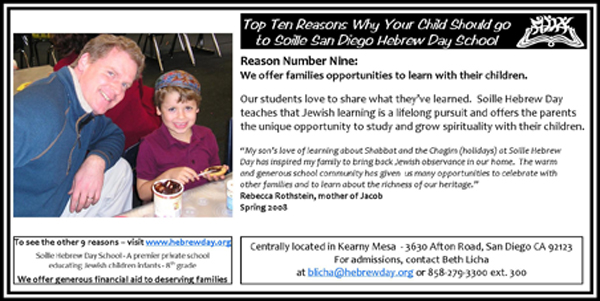
l.
.


Thursdays With the Songs of Hal Wingard
Editor's Note: We continue our presentation of the songs of Hal Wingard, moving this week to the songs he wrote about love. Here is a link to an index of Wingard's songs published by San Diego Jewish World. To hear Hal performing the song, click on its title.
 #45, Love Is The Promise #45, Love Is The Promise
I make you no promise
On this, our wedding day.
I tell you only how I feel.
What more is there to say?
To vow for the future
Requires of me too much.
I cannot know tomorrow's kiss
Or feel tomorrow's touch.
But, oh, how I love you
On this, our wedding day.
I feel the beating of my heart;
It pounds my breath away.
In all of my senses
I long to be with you,
To know your thoughts as you know mine,
To share in all we do.
The joy that you bring me
On this, our wedding day.
I see reflected through your eyes
In such a happy way.
But who sees the future?
It never can be known.
It's only as we view the past
We see how love has grown.
Our love is the promise
On this, our wedding day.
The only hope that love will last
Is that we love today.
Our love is the promise.
We'll live each day, and then
We'll live the next as if it were
Our wedding day again.
Love is the promise
On this, our wedding day.
#95, Love Is So Elusive
Love is so elusive,
Quick to disappear,
Ever inconclusive,
Even when it's near.
But with you and me together,
As we are today,
Though it may be hiding,
Love's not far away.
Love is so elusive,
Shadow in the shade
When you think you see it,
Your eyes can be betrayed.
'Though it's true that love's a shadow,
Difficult to view,
Still, I feel love's closeness,
When I'm close to you.
Love is so elusive;
Nonetheless it's real.
If you fail to see it,
Look to how you feel.
#174, Porcelain Love
Our love, delicate love.
Delicate love, our love.
Ours is a porcelain love,
A delicate, fragile affair,
Requiring a sensitive touch
To tend it with consummate care.
Ours is a porcelain love
That cracks when the climate is cold,
That shatters at harsh accusations,
At anger and stress uncontrolled.
Our love, delicate love.
Delicate love, our love.
Ours is a porcelain love,
That splinters from angry debate,
Whose pieces are jagged and cutting
And pierce even deeper than hate.
Ours is a porcelain love,
Delicate, fragile, and rare;
Yet loving becomes all the richer
In learning to tend it with care--yes,
Loving becomes all the richer
In learning to tend it with. . .
Our love, delicate love.
Delicate love, our love.



THE JEWISH CITIZEN
'Adventures' column provides overview of San Diego's Jewish community in late 1940s
By Donald H. Harrison
 SAN DIEGO—Those of you who have been reading our "Adventures in San Diego Jewish History" column closely may have discerned how emotionally eventful the late 1940s were for the San Diego Jewish community. SAN DIEGO—Those of you who have been reading our "Adventures in San Diego Jewish History" column closely may have discerned how emotionally eventful the late 1940s were for the San Diego Jewish community.
First off, there was the realization of the devestating extent of the Holocaust, and the heartfelt communal determination to do something, anything, to render aid to the survivors.
This need found expression both in community fundraising, through the United Jewish Fund (forerunner of the United Jewish Federation), and in collections of Yiddish books, toiletries, blankets and clothing for the people in the Displaced Persons (DP) camps in Europe. Some local groups made layettes to be distributed through the Displaced Persons Camps.
There also was an effort to sponsor numerous DP families to become San Diego residents and new U.S. citizens. This required the community to pledge that the DPs would be provided with housing and jobs by the community and would not become a burden on the welfare system. Among the families that arrived in San Diego was that of Rabbi Baruch Stern who became spiritual leader of Beth Jacob Congregation, which switched its orientation from Conservative to Orthodox Judaism. Tifereth Israel Synagogue, meanwhile, went in the other direction. Originally Orthodox, Tifereth Israel under Rabbi Monroe Levens became Conservative.
Rabbis Stern and Levens, along with Rabbi Morton J. Cohn of Congregation Beth Israel, personified a time when our community's three movements worked together. It was not uncommon to see the three rabbis working in tandem on common projects nor for them to be guest speakers at each other's congregations.
The National Council of Jewish Women operated a "Council House" for the benefit of refugees who settled there.
During the late 1940s, Israel struggled for its existence and San Diegans warmed to the cause. Community leaders traveled to Israel to distribute gifts then made reports to the communithy about what they saw. Visits to San Diego by actual 'Palestinians'—later called 'Israelis'—never failed to generate large audiences.
Hadassah, Pioneer Women and the Histadrut Council of San Diego raised money through various fundraising projects for worthy causes in Israel.
At the same time, San Diego Jewry wanted to show their appreciation to American servicemen and women for their contributions in fighting foreign totalitarianism. Various projects were undertaken to provide aemnities for the patients at the Balboa Naval Hospital as well as recreational opportunities—including dances and beach parties—for patients who wee ambulatory. Jewish War Veterans made a point of mustering large contingents to march in military parades, anxious for the world to know that Jews had not only been victims but also warriors during World War II.
A close reading of Jewish club news indicates that seemingly no event was cmplete without a contribution in some form for those whom war and hatred had left in reduced circumstances.
At the same time, the Jewish community was beginning to question its own foundations. Was it strong enough and diverse enough to retain its members and attract new ones given the worldwide evidence of how dangerous it was to be be identified as a Jew? And did Jews, themselves, have sufficient information about the history, customs and traditions of the Jewish people to warrant their involvement in the community?
Under the leadership of Dr. A.P. Nasatir, a history professor at San Diego State College; his wife, Ida Nasatir, a popular lecturer and book reviewer, and Rabbis Cohn, Levens and Stern, the community decided to create the Jewish Institute, offering adult education in a variety of Jewish topics. This organization was a forerunner of today's Agency for Jewish Education.
Needs of college-aged Jews also were addressed when the B'nai B'rith organization sponsored a meeting of local college students with representatives of Hillel. After learning the purposes of the organization, the students voted to support creation of a Hillel 'Councilorship' at San Diego State.
For youth, the community began experimenting under the direction of UJF Executive Director Albert Hutler with camping for youngsters—both day camping and overnight camping. The day camp was based at the Temple Center of Beth Israel, then at 3rd and Laurel Streets, and utilized the nearby facilitities of Balboa Park. Field trips were arranged to such destinations as nearby military facilities, the beaches and to the Torrey Pines area.
A sleepover camp, situated in the Cuyamacas, convened in the weeks following the day camp sessions, enabling children to have both experiences.
While camping seemed to have univeral support, there was debate over the growing movement to create a Jewish Community Center. Would such an installation help to attract and retain Jews in the community, or would it serve as a centrifugal force, pulling people away from the synagogues, which rabbis like Monroe Levens insisted should remain the core institutions of the community?
San Diego in the late 1940s can be characterized as having a Jewish community preoccupied with providing support and succor to European Jewish refugees, while at the same time attempting to determine its own future development.
"Adventures in San Diego Jewish Histrory," in its reprint of stories from the old Southwestern Jewish Press, soon embark on an examination of this community in the 1950s.

.jpg)
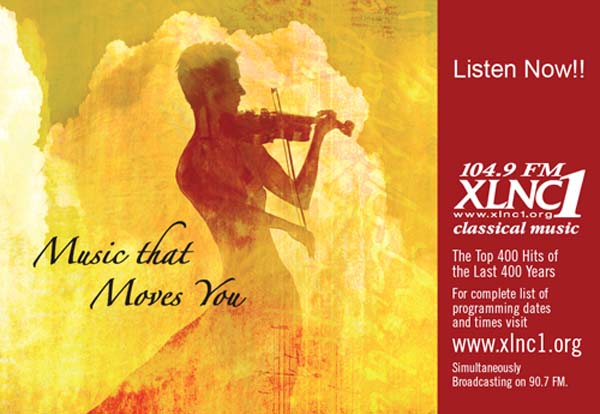

ADVENTURES IN SAN DIEGO JEWISH HISTORY
Editor's Note: To create a permanent and accessible archive, we are reprinting news articles that appeared in back issues of various San Diego Jewish newspapers. You may access an index of the headlines of those articles by clicking here. You may also use the Google search program on our home page or on the headline index page to search for keywords or names.
Who's New?
(Maybe They Come From Your Home Town)
From Southwestern Jewish Press, December 2 ,1949, page 3
Bette and Nathan Mintz, and their two children, Diane, 10 yrs., and Linda, 2 yrs., are recent arrivals from Southgate, California, (originally Cleveland, Ohio) and reside at 1671 Neale Street. Mr. Mintz has taken over the management of Household Furnishings.
Gerda Sonia Freund has arrived recently from Blackpool, Lancs, England to join her parents Walther and Stefanie Freund, in their home at 1254 23rd Street. Sonia has been separated from her family 10 years. She is a British Registered Nurse and hopes soon to be registered in the State of California. Her parents are local residents for 2 ½ years, having come from Shanghai.
Charles and Dorothy Kronick have already established themselves in their new home at 4340 Pescadera Dr. The Kronicks asre former residents of Los Angeles. Mrds. Kronick is a sister to our own Frances Sklar.
We wish you all a long and happy stay in San Diego.
J.C.R.A.
From Southwestern Jewish Press, December 2 ,1949, page 3
By Jeanne Camiel
Mrs. Eva Fagelson and Mrs. Elizabeth Gotkin will sponsor a Turkey Dinner on Sunday, December 11 at 6 p.m. at the Temple Center, Third and Laurel Streets< in honor of their grandchildren. Proceeds from this affair will go to J.C.R.A. and Histadrut.
The following officers were elected at the last meeting on November, 14 to serve for the year 1950: President, Esther Schwartz; First Vice President, Gladys Tappan; Second Vice President, Jeanne Camiel; Third Vice President, Fanny Addleson; Treasurer, Bess Siegel; Financial Secretary, Ruth Bloom; Recording Secretary, Sophie Himmel; Corresponding Secretary, Goldie Schusterman; Social Secretary, Betty Schwartz; Honorary President, Anna Shelley; Councilor, Jennie Siner; Trustees: Becky Bard, Anna Epstein, Jennie Kochberg, Rose Weisberg, Edith Belenzon and Luncheon Chairman, Goldie Kitaen, assisted by Esther Cole.
.
San Diego Lasker Lodge B’nai B’rith
From Southwestern Jewish Press, December 2 ,1949, page 5
A large group of members attended the last meeting of San Diego Lasker Lodge No 370 Bnai Brith last Monday evening, November 28th at Temple Center to hear detailed reports by the delegates to the recently held District Convention in Las Vegas.
William B. Schwartz acted as Moderator for the reporting delegates, who gave very interesting highlights on the activities of the Convention.
Zel Greenberg reported on Social Activities, Morrie Kraus gave the report of Hillel, Ell Levenson reported on A.D.L. and Harry Mallen gave his report on the Elections of the Convention. Eddie Breitbard reported on A.Z.A. and the State of Israel project, while Mr. Henry Weinberger was heard on Widerscope and Young Men’s Activities. Mr. Schwartz finished the reporting by reporting on Per Capita Taxations and Impressions.
The meeting then progressed to the annual election of the Officers for the coming year. The following were elected to hold office for 1950, Morrie Kraus, president; Jerry Freedman, 1st vice-president; Lou Mogy, 2nd vice-pres.; Ralph Feldman, warden; Zel Greenberg, guardian; Al Doctor, treasurer; Sam Brenes, recording secretary; and Ed Barnanov, financial and corresponding secretary.
Additional trustees elected for a three year term are Sid Goldstein and Morrie Douglas. Elected as Chaplain is William B. Schwartz.
Plans are in the formative stage for Installation of these officers, the Installation to take place Sunday evening, January 8, 1950 in the Don Room of the El Cortez Hotel. Jerry Freedman is in charge and the program for that event will be announced at a later date.
Mr. Henry Weinberger, past Grand President of District No. 4 and Mr. Eli Levenson, past President of San Diego, Lasker Lodge and a member of the Executive Board of Grand Lodge Dist. No. 4, will be the installing Officers. A Pre-Installation Dinner will take place at 6:00 p.m. in the El Cortez Hotel.
Temple Men’s Club
From Southwestern Jewish Press, December 2 ,1949, page 5
The Temple Men’s Club of Temple Beth Israel will hold their regular meeting on Tuesday evening, December 6th at 8:00 p.m. at Temple Center.
The principal speaker of the evening, will be Mr. John Landesco, former Research Director in Criminology at the University of Chicago. Mr. Landesco has chosen as his topic, “A New Slant on Chanukah.”
Cantor Julian K. Miller will entertain with a selection of Jewish Songs.
Mr. Dick Lustig, president of the Temple Men’s Club cordially invites all members and their friends to attend this meeting.
{Return to top}


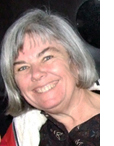 Nancy Harrison Nancy Harrison
cruise & tour specialist
(619) 265-0808
.
|
|


